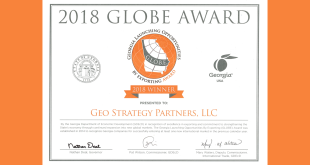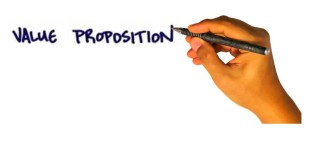What’s different about B2B?
The first ESOMAR B2B symposium focused exclusively on B2B market research was held in Atlanta on October 14, 2014. Geo Strategy Partners participated from both the audience and the podium.
KEY TAKEAWAYS
B2B industrial is a fraction of a fraction: B2B market research firms comprise approximately 8% of all market research firms and those with an industrial focus comprise only 25% of those. You do the math: only 2% of market research firms work consistently within industrial markets.
B2B really is different: There is an emerging conventional wisdom suggesting that the internet and digital marketing are the great levelers. More specifically, a school of thought led primarily by B2C marcom agencies suggests there is no B2B only H2H. While there is a kernel of truth to the notion that technology allows mass personalization of marketing communications, the reality is that B2B market research remains strikingly different than B2C in many ways:
- Complex decision-making across an organization of decision-makers
- Researcher must embrace ambiguity and understand organizational behavior
- Purchases are often in the six to seven figure range
- A number of significant elements of the decision process must be analyzed
- Sales cycles can easily be 1-2 years
- Short-term insights have to be measured for their long-term impact
- Decision-makers are hard to identify, find and recruit
- Experienced B2B consultants are essential to find and convince these high value respondents to speak to you
- Respondents are experts in the subject matter being discussed
- Moderators must have deep experience covering technical or business issues to extract full value from such interviews
- You can’t separate research from strategy
- If researchers are not also industry analysts or business strategists, they will fall short in B2B. There is simply no separating the go-to-market business strategy from the insights and analysis.
- Complexity is the norm
- There is no prescriptive approach to B2B research. Every project is an exploration. Failure and course corrections must be built into the methodology.
It’s all about the business context: B2C market research is often focused on the science of the methodology, the precision of the sampling, or the behavioral science context within which insights are interpreted. B2B market research is less about the psychology than the business strategy. For that reason, B2B market research conducted in a vacuum is not useful. You have to understand the business context, you have to understand strategy, and you have to be able to interpret insights through the prisms of both.
We are not tweeters: The use of social media to gather basic data and insights is fine, however analysis shows that primary market research performed through social media platforms is terribly skewed and therefore unreliable for a B2B marketer.
- B2B marketers have tried social media and, despite what the agencies say, most have retracted their investments there. LinkedIn is still viewed as the only credible social media platform for B2B. That being said, qualitative intelligence gathering through social media is still effective, and it can be a useful tool for identifying thought leaders and accessing hard-to-reach decision-makers.
The right target at the right time with the right interviewer: Pre-recruitment of high value, hard-to-reach industrial/B2B interview targets is less effective than catching them where they work. Creative recruitment paired with good screeners and exceptional B2B interviewers are keys to capturing insights from hard-to-reach targets.
Gut feel drives purchase decisions: Believe it or not, most of the business purchase decisions are actually based on emotional rather than objective criteria (even German engineers have to “feel it in their gut.”). Interesting research is available supporting how even the most objective criteria is often interpreted emotionally.
Prime the pump before brainstorming: The key to productive ideation is to prime the internal decision-makers with primary research before asking them to brainstorm. Having them observe customers’ ideation sessions (while restricted from entering the conversation) is a good first step. Having the customers engaged with the internal team later in the process is then much more productive. The challenge is to recruit respondents willing to commit long-term to the product innovation process.
It’s all about the people: Traditional B2C researchers rarely thrive in a B2B world. Engineers seldom succeed at industrial marketing. Pure salesmen struggle with the distance between the cause and effect of marketing. It takes a researcher that is part strategist, part researcher, part mechanic, and most importantly a cynical skeptic that accepts no information at face value until it has been reconfirmed at least three different ways to get B2B research right.
Over the past 10 years, Geo Strategy Partners has refined its approach to screening and interviewing B2B researchers. We have found that while many of the skill sets are shared between B2C and B2B market researchers, the personal characteristics required are vastly different. Personnel who can thrive in a B2B environment are rare, but what do they have in common. We have identified the following traits:
- Insatiable curiosity – they never stop learning and want to know everything about everything
- Mechanical inclination – they don’t have to be engineers but they need to understand how things work. They should be familiar with the layout of a factory floor
- Fear of failure – for better or worse, to excel in this business, analysts must have an existential need to prove themselves on every project. Any lesser motivation and they will crumble under the weight of the first project
- Business acumen – this is about business strategy – research is only a means to an end. If you don’t understand business in all its complexity, you have no business in a business-to-business environment
- Off-the-chart cynical – we refer to this as “the chromosome.” Someone possessing this magic ingredient won’t simply tick off the boxes of tasks A, B, and C. They will want to know why the ABCs are capitalized, they will research the linguistic origin of the letters, and they will question why we are not doing 1, 2, and 3 instead. They are obstinate, ornery, and never satisfied with simple answers. They required a preponderance of evidence before accepting a conclusion drawn from research.
 GeoCache Where you are… Where you need to be… How you get there
GeoCache Where you are… Where you need to be… How you get there






